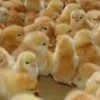
News briefing:

News briefing:
Duck egg production syndrome is a disease characterized by decreased egg production caused by some infectious factors, some nutritional deficiencies and some stress reactions. Epidemics are more common in late autumn and winter, with rapid onset and rapid spread, which are likely to cause a large regional epidemic. It mainly affects laying ducks and breeding ducks at the laying stage, and primiparous ducks are more susceptible to infection. When an epidemic occurs, other poultry in the duck farm area, such as chickens, ducks, and geese, are also infected with related pathogens.
1. Clinical diagnosis:
Her appetite dropped drastically, her head was swollen, she shed tears, and the feathers around her eyes were moist. Diarrhea, thin stools, white or light yellow. The egg production dropped sharply, and the egg production rate dropped by 70% to 80% within 2 to 3 days, and lasted for 2 to 3 weeks. The eggs laid were soft shells, no shells, rough shells, easy to rupture, or small eggs. The pathological anatomy features are: conjunctival hyperemia, the intestine may have a certain degree of hyperemia and insignificant hemorrhage, ovarian atrophy, congestion and deformity of eggs. In addition, during the diagnosis, attention should be paid to distinguish the diseases of decreased egg production caused by infections of Escherichia coli, Staphylococcus, Mycoplasma septicemia, etc., and diseases of decreased egg production caused by other nutritional deficiencies and environmental stress factors.
2. Prevention measures:
(1) Supplement nutrition, ducks like to eat meat, animal protein materials should be added to the feed, and a variety of vitamins should be added to supplement nutrition.
(2) Reasonable feeding. The amount of concentrate fed to gooseneck ducks should be determined according to the egg production rate. If the egg production rate is above 50%, more concentrate can be added. On the contrary, some green and juicy feed can be fed, or the egg production rate can be increased. With regard to the amount of bran in the feed, ducks should not be fed too fat or too thin, too fat to lay eggs, and too thin to lay eggs. The ducks should always be kept in good body condition.
(3) Maintain a suitable environment. The ducks’ living environment must have both a pool for playing and a dry place for activities, and the water quality is hygienic. The laying ducks in autumn have a strong metabolism and are sensitive to the environment. Therefore, do not change the feed composition easily. The temperature is too high. It can prolong the bathing times of the ducks when it is high. In addition, ducks are afraid of noise and are easily frightened. Therefore, the duck house should be kept quiet to reduce noise stimulation.
(4) Increase light. Insufficient light in autumn will affect egg production. Two sets of lighting equipment can be installed in the duck house to supplement the light.
Date of opening:1970-01-01
Shop address:
Main products:
Store certification time:1970-01-01 08:00:00
Store Name:
Principal:
Contact number:
email: